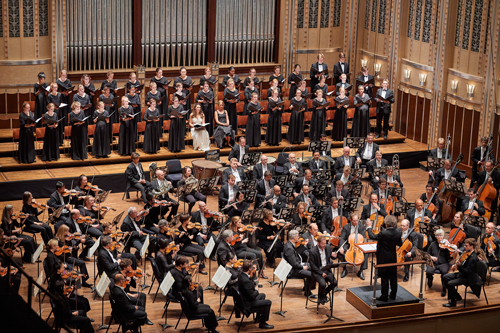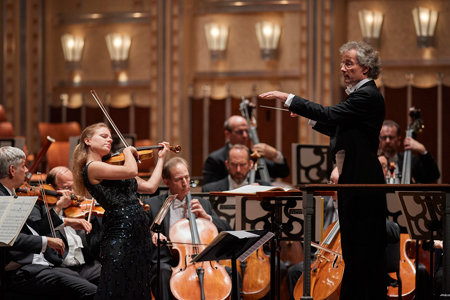by Daniel Hathaway

The Cleveland Orchestra devoted the second half of its May 11 concert to that overture and incidental music, led by Franz Welser-Möst, with the delightful assistance of the high voices of the Cleveland Orchestra Youth Chorus, soprano Anya Matanovic, mezzo-soprano Emily Fons, and actor Itay Tiran (who channelled a host of characters).
Anyone who is not charmed by Mendelssohn’s score, as Shakespeare wrote elsewhere, “is fit for treasons, stratagems, and spoils.” The opening four chords of the Overture cast an immediate spell and bring the listener into an enchanted world where double-tongued snakes and weaving spiders are held at bay by guardian fairies, and bumbling mortals are transmogrified into beasts.
Though Welser-Möst whipped up the tempo in the fast sections of the Overture a bit beyond the point of charm and spaciousness, his pacing of the rest of the incidental music and his coordination with Tiran were admirable. The flutes shone at the end of the Scherzo, the horns were noble in the Nocturne, and the brass festive in the Wedding March (where percussionist Marc Damoulakis produced a variety of nuanced cymbal clashes).

The first half of the concert conjured another kind of magic. Hans Werner Henze’s Il Vitalino raddoppiato expands on a famous chaconne by Vitali that wormed its way into Henze’s ear as a child. Almost equal parts Vitali and Henze, the work finds the two composers trading material in 4-bar phrases for nearly 25 minutes.

Called back several times, Fischer gave the audience another violin treat — Paganini’s Second Caprice, played with verve, precision, and a wide range of dynamics.
Two more musical items weren’t in the printed program on Thursday. Both were in honor of Mrs. Clara Rankin, who scooped The Cleveland Orchestra by turning 100 a year before her beloved ensemble did. Brought on stage by Welser-Möst, she was serenaded with Schubert’s An die Musik and a round of Happy Birthday.
Photos by Roger Mastroianni courtesy of The Cleveland Orchestra.
Published on ClevelandClassical.com May 16, 2017.
Click here for a printable copy of this article



